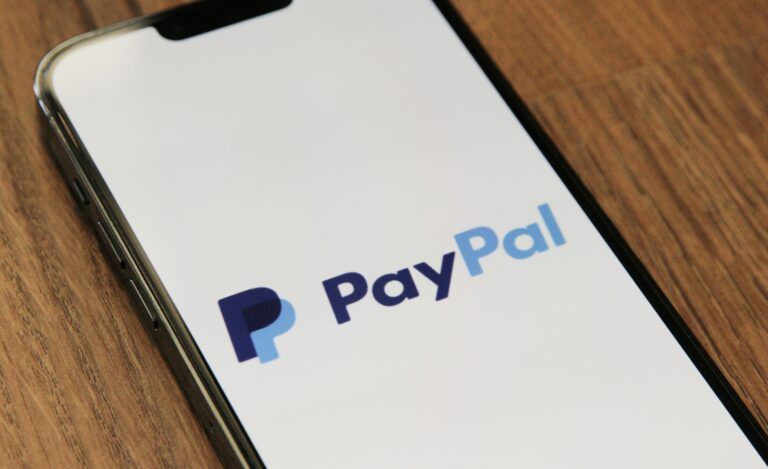Merchant accounts are the spine of your business. There is no structure and no function without one.
Below, we’ve outlined everything you need to know about merchant accounts. What they are, differences between them, how to apply, and more.
Apply for a merchant account with DirectPayNet
What is a Merchant Account?
A merchant account is a type of business bank account that allows a company to accept and process electronic payment transactions, such as credit and debit card payments.
It serves as an agreement between a retailer, a merchant acquiring bank, and a payment processor for the settlement of credit and debit card transactions.
When a customer makes a purchase using a credit or debit card, the funds are first deposited into the merchant account. The money is then automatically transferred to the business’s primary bank account, usually within a few business days, minus any processing fees.
Merchant accounts are essential for businesses that want to offer customers the convenience of paying with credit or debit cards, both online and in-store. Without a merchant account, a business would only be able to accept cash, checks, or bank transfers as payment methods, which could limit its potential customer base and revenue.
To accept credit card payments, a business must first establish a merchant account with a merchant acquiring bank. The merchant account provider will typically provide the business with the necessary hardware and software to process transactions, such as credit card terminals, point-of-sale (POS) systems, and payment gateways for online transactions.
When a customer makes a card payment, the merchant account provider verifies the availability of funds and handles the secure transfer of the payment data between the customer’s issuing bank and the merchant’s acquiring bank. Once the transaction is approved, the funds are deposited into the merchant account, and the merchant account provider deducts its processing fees before releasing the remaining balance to the business’s primary bank account.
Types of Merchant Accounts
When it comes to merchant accounts, there are two main types: standard merchant accounts and high-risk merchant accounts. The type of account a business needs depends on the industry it operates in and the level of risk associated with its transactions.
Standard Merchant Accounts
Standard merchant accounts are designed for businesses that are considered low-risk. These businesses typically have a stable business model, a good credit history, and operate in industries with low chargeback rates.
Examples of low-risk businesses include retail stores, restaurants, and professional services like law firms or accounting practices. These types of businesses usually process a high processing volume with relatively low average ticket sizes.
Applying for a standard merchant account is generally easier than applying for a high-risk account. The approval process is faster, and the fees associated with maintaining the account are lower. Standard merchant account providers often offer competitive rates for processing fees, monthly fees, and transaction fees.
High-Risk Merchant Accounts
High-risk merchant accounts are designed for businesses that operate in industries considered to have a higher risk of chargebacks, fraud, or legal issues. These businesses may have difficulty obtaining a standard merchant account due to the nature of their industry or their business model.
Examples of high-risk industries include adult entertainment, CBD and cannabis products, gambling and gaming, and travel services. These businesses often have higher average ticket sizes and may experience more frequent chargebacks or refund requests.
Applying for a high-risk merchant account involves more scrutiny during the application process but results in payment processing that best understands your business model.
Providers will typically require more detailed information about the business, its owners, and its financial history. High-risk merchants may also be subject to higher processing fees, monthly fees, and reserve requirements to mitigate the provider’s risk.
Open the right merchant account for your business today
Common Low-Risk vs High-Risk Industries
When applying for a merchant account, you need to understand whether your business falls into a low-risk or high-risk category. The level of risk associated with your industry can significantly impact the type of merchant account you qualify for and the fees you’ll pay.
Most Common Low-Risk Online Industries
Low-risk industries are characterized by a low incidence of chargebacks, fraud, and legal issues. Businesses in these industries typically have an easier time securing a merchant account with favorable terms and lower fees.
Some of the most common low-risk e-commerce industries include:
- Retail: Online stores selling physical goods, such as clothing, electronics, or home goods.
- Professional Services: Businesses offering services like consulting, accounting, or legal advice.
These industries often have a high sales volume with low average ticket sizes, and customers are generally satisfied with the products or services they receive, resulting in fewer chargebacks and refund requests.
Most Common High-Risk Industries
High-risk industries, on the other hand, are more prone to chargebacks, fraud, and legal issues. Securing a merchant account for a high-risk business can be more challenging, and these accounts typically come with higher fees and more stringent requirements.
Some of the most common high-risk industries include:
- Subscription Services: Businesses that offer recurring billing for products or services, such as monthly box subscriptions or online memberships.
- Adult Entertainment: Websites or businesses that offer adult content, products, or services.
- CBD and Cannabis: Businesses that sell cannabidiol (CBD) products or cannabis-related products, which may face legal or regulatory challenges.
- Gambling and Gaming: Online casinos, sports betting websites, and other gambling-related businesses.
- Travel and Timeshares: Businesses that offer travel packages, vacation rentals, or timeshare properties, which may have higher rates of cancellations and chargebacks.
These industries often have higher average ticket sizes and may experience more frequent chargebacks due to customer dissatisfaction, buyer’s remorse, or fraudulent activity.
We will connect you with a payment processor that backs your business
Why Your Business Needs a Merchant Account
Every business needs to accept credit cards, debit cards, and other forms of digital payments to succeed in the 21st century. Here are more facts about merchant accounts that will convince you to open one today.
Accept Credit and Debit Card Payments
A merchant account enables your business to accept credit and debit card payments from customers. With the increasing popularity of online shopping and cashless transactions, offering this payment option is essential.
Legitimize Your Business
Having a merchant account demonstrates to customers that your business is legitimate and trustworthy. It shows that you have undergone the necessary vetting process and have been approved by a financial institution to accept card payments.
Improve Cash Flow
By accepting credit and debit card payments, you can improve your business’s cash flow. Funds from card transactions are typically deposited into your account within a few business days, providing a steady stream of income. This can help you better manage your expenses and invest in growth opportunities.
Provide Convenience for Customers
Offering the option to pay by credit or debit card provides a significant convenience for your customers. Many people prefer to use cards for their purchases, and by accepting this payment method, you make it easier for them to buy from your business. This can lead to increased sales and customer loyalty.
Payment Aggregators vs. Merchant Account Providers
It’s important to note that payment aggregators like Stripe, Shopify, and PayPal are not the same as merchant account providers. While these platforms allow you to accept card payments, they aggregate transactions from multiple businesses into a single merchant account.
This means that your business may face a higher risk of account holds or terminations if there are issues with other business owners using the same aggregator. Additionally, payment aggregators often have more stringent credit card processing limits and may not be suitable for high-volume or high-risk businesses.
In contrast, a dedicated merchant account provides your business with its own unique account and more stable payment processing capabilities. While the application process may be more involved, a merchant account offers greater control, customization, and support for your business’s payment needs.
Don’t fall for Stripe. Get a REAL merchant account today!
How to Apply for a Merchant Account
Applying for a merchant account involves several steps to ensure that your business is properly vetted and approved for payment processing. Here’s a step-by-step guide to help you navigate the application process:
1. Gather Required Business Documents
Before applying for a merchant account, gather all the necessary documents that providers will require. These typically include:
- Business license and registration
- Tax ID number, Employer Identification Number (EIN), or Social Security Number (SSN)
- Bank statements and financial reports
- Processing statements (if you currently accept card payments)
- A one-page top sheet summarizing your business and its ownership
Having these documents organized and readily available will streamline the application process.
2. Research Merchant Account Providers
Research merchant account providers that work with businesses in your industry. Start by determining your merchant category code (MCC), which classifies your business type. Then, look for providers that specialize in serving businesses with your MCC.
Consider factors such as the merchant service provider’s reputation, experience, customer support, and technology offerings when evaluating potential partners.
3. Compare Pricing Models and Contract Terms
Once you’ve identified potential providers, compare their pricing structures and contract terms. Pay attention to factors such as:
- Processing fees (per transaction and monthly)
- Monthly minimum charges
- Setup fees
- Early termination fees
- Contract length
- Equipment costs
Don’t hesitate to negotiate with providers to secure the best possible rates and terms for your business. Also, become familiar with pricing models like interchange plus, flat-rate, and tiered pricing.
4. Submit Application and Underwriting Documents
After selecting a provider, submit your merchant account application along with the required underwriting documents. Be thorough and accurate in your application, as any discrepancies or omissions could delay the approval process.
5. Undergo Underwriting Review Process
Your chosen provider will then review your application and conduct an underwriting process to assess your business’s risk level. This may involve requesting additional documentation, such as bank references or a more detailed business plan.
Be responsive to any requests for information to keep the process moving forward smoothly.
6. Get Approved and Set Up Payment Processing
If your application is approved, your merchant account provider will work with you to set up your payment processing system. This may involve:
- Installing credit card terminals, POS systems, or card readers
- Integrations for payment gateways with your website or online store
- Ensuring PCI compliance
- Training your staff on proper transaction processing procedures
- Establishing deposit and settlement schedules
Once your payment processing is set up, you’ll be ready to start accepting credit and debit card transactions from your customers.
Don’t delay! Apply for your merchant account now.
Key Merchant Account Terminology
Issuer
- The financial institution that issues credit or debit cards to consumers
- Also known as the “issuing bank” or “cardholder’s bank”
- Responsible for extending credit to cardholders and approving or declining transactions based on available funds or credit limits
- Examples include Chase, Bank of America, and Capital One
- Works in partnership with the acquirer to facilitate payment processing and settle funds between the cardholder and the merchant
- Sets the terms and conditions for cardholder agreements, including interest rates, fees, and rewards programs
- Manages risk by monitoring cardholder accounts for fraudulent activity and initiating chargebacks when necessary
- Earns revenue from interest charges, annual fees, and a portion of the interchange fees collected on each transaction
Acquirer
- The bank or financial institution that processes transactions on behalf of the merchant
- Also known as the “merchant bank” or “acquiring bank”
- Responsible for accepting and processing credit and debit card transactions
- Underwrites and approves merchant accounts
Payment Gateway
- Software that facilitates the secure transfer of payment data between the merchant’s website or point-of-sale system and the acquiring bank
- Encrypts sensitive card information to protect it from fraud and unauthorized access
- Enables online and mobile payment processing
- Examples include Authorize.net, Stripe, and Braintree
Interchange Fees
- Transaction fees set by the card networks (Visa, Mastercard, American Express, Discover)
- Paid by the acquiring bank to the issuing bank (the cardholder’s bank) for each transaction
- Covers the costs associated with processing payments and mitigating risk
- Varies based on factors such as card type, transaction type, and merchant category code
Chargeback
- A disputed or reversed transaction initiated by the cardholder
- Occurs when a customer contacts their issuing bank to request a refund for a transaction they claim is fraudulent, unauthorized, or unsatisfactory
- Results in the transaction amount being deducted from the merchant’s account and returned to the cardholder
- Can lead to additional fees and penalties for the merchant if chargeback rates are high
- Merchants should have a clear refund policy and maintain detailed transaction records to prevent and respond to chargebacks
Merchant Category Code (MCC)
- A four-digit number assigned by credit card networks to classify businesses by the type of goods or services they provide
- Used to determine interchange fees, risk levels, and other processing requirements
- Examples include 5411 for grocery stores, 5732 for electronics stores, and 7995 for gambling transactions
- Merchants should ensure they are classified under the correct MCC to avoid higher fees or account termination
Whether you’re a small business, an entrepreneur, or a large-scale B2B giant, you need a merchant business account to accept online payments.









